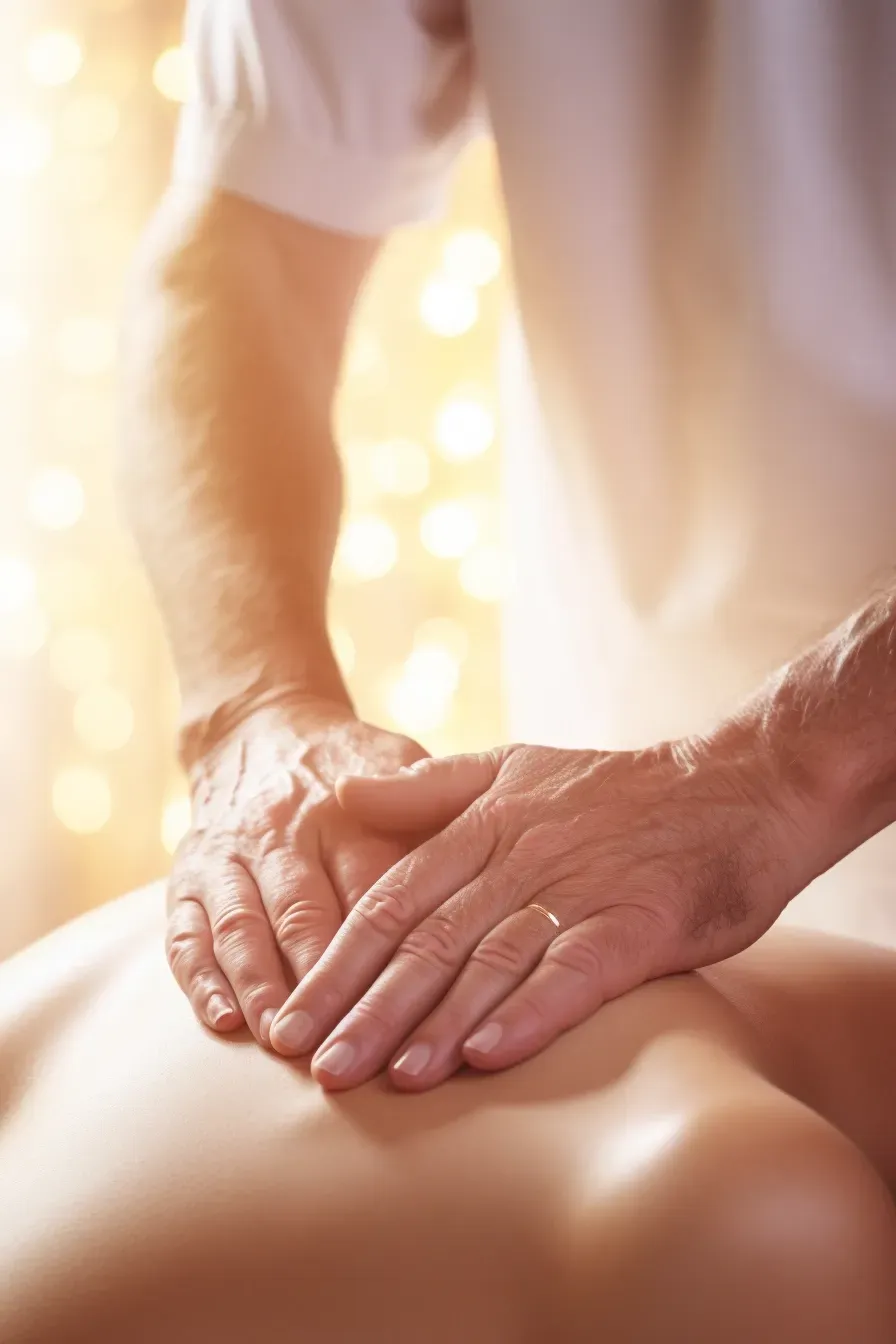

Music Wellness:
Offer music sessions where patients can listen to or participate in live music, sing, or play instruments. Customize playlists to suit patients' musical tastes and use music to soothe, uplift, or engage them
emotionally.

Animal Companionship:
Arrange visits from certified therapy animals, such as dogs or cats, to provide companionship and comfort
to patients. Ensure that patients are comfortable with animals and have no allergies or aversions.

Reiki Sessions:
Train and certify practitioners who can offer sessions to alleviate pain, reduce anxiety, and promote relaxation. Coordinate with patients and their families to schedule reiki sessions as part of their care plan.

Massage Techniques:
Employ professionals who can provide gentle massages to relieve pain, reduce muscle tension, and enhance relaxation.
Use specialized techniques suited to each patient's condition and preferences.

Meditation and Mindfulness:
Conduct group or one-on-one sessions to help patients manage anxiety, find inner peace, and connect with their spiritual beliefs.
Provide guidance on deep breathing and relaxation exercises.

Aromatherapy:
Introduce the use of essential oils to create a calming and soothing environment.
Ensure that scents are chosen based on patients' preferences and sensitivities.

Art Expression:
Encourage creative expression through various art forms, allowing patients to explore their feelings and memories. Provide art supplies and guidance for those interested.

Gentle Movement Practices:
Offer gentle movement classes to improve flexibility, balance, and emotional well-being.
Adapt movements to accommodate patients with limited mobility.

Spiritual Support:
Collaborate with spiritual counselors or clergy members who can provide guidance and support in alignment with the patient's beliefs.

Family Involvement:
Encourage family members to participate in holistic sessions when appropriate, fostering a sense of togetherness and support.
See Our Blogs

Massage Techniques in Hospice Care: Providing Comfort and Relief
Introduction: The Role of Massage in Hospice Care
In the sensitive realm of hospice care, massage therapy has emerged as a key component in providing comfort and relief to patients facing end-of-life challenges. This article delves into the various massage techniques tailored for hospice settings, highlighting their benefits and the care taken to adapt them to the needs of hospice patients.

Understanding the Basics of Hospice Massage
Defining Hospice Massage: Hospice massage is a gentle, non-invasive form of therapy designed to provide comfort, relieve stress, and improve the quality of life for those in hospice care.
Goals of Hospice Massage: The primary goal is to offer physical and emotional relief, help in managing symptoms, and provide a sense of peace and wellbeing.
Key Massage Techniques Used in Hospice Care
Swedish Massage: This technique uses gentle strokes and kneading to promote relaxation and improve circulation. It is often modified to suit the delicate condition of hospice patients.
Aromatherapy Massage: Incorporating essential oils can enhance the therapeutic effects of massage, providing additional relief from anxiety and pain.
Reflexology: Focusing on pressure points in the feet, hands, and ears, reflexology can stimulate energy flow and provide relief from symptoms.
Tailoring Techniques to Individual Needs
Assessing Patient Condition: Each patient's physical and emotional state is assessed to determine the most appropriate massage techniques.
Modifying Pressure and Approach: Massage therapists skilled in hospice care adjust their pressure and techniques to accommodate the patient's medical condition and comfort level.
Integrating with Medical Care: Hospice massage is often coordinated with the patient's medical care plan to ensure safety and maximize benefits.
Benefits of Massage in Hospice Care
Pain Relief: Massage can significantly reduce pain, which is a common concern for hospice patients.
Reducing Anxiety and Depression: The soothing effect of massage can alleviate feelings of anxiety and depression that often accompany end-of-life stages.
Improving Sleep Quality: By promoting relaxation, massage can help improve sleep quality, which is crucial for patient comfort.
Training and Sensitivity of Hospice Massage Therapists
Specialized Training: Therapists working in hospice care undergo specialized training to understand the unique needs of hospice patients.
Empathy and Compassion: Beyond technical skills, a deep sense of empathy and compassion is essential for providing effective hospice massage.
Challenges and Considerations
Navigating Physical Limitations: Adjusting techniques to accommodate the physical limitations and medical conditions of patients is a critical consideration.
Emotional Impact: Massage therapists must be prepared to handle the emotional aspects of working with terminally ill patients and their families.
Conclusion: Embracing the Healing Touch in Hospice Care
In conclusion, massage therapy in hospice care plays a vital role in enhancing the quality of life for terminally ill patients. Through a variety of adapted techniques, skilled therapists provide much-needed relief, comfort, and emotional support. As an integral part of holistic hospice care, massage therapy stands out as a compassionate and effective approach to easing the journey through end-of-life care.

Interested In Care For Yourself Or A Loved One? Give Us A Call Today To Learn More.
© 2022 Unified Care Hospice - All Rights Reserved
info@ucarehospice.com
702-982-8266
